[Photos] Construction of Germany's Only LNG Ferry
By Erik Kravets and Audrey Kravets
So much excitement has surrounded Germany's only LNG ferry in the local media, we simply had to visit and see what all the fuss was about. After construction of the basic hull at Hulcon Shipyard in Stettin, Poland, the specialist ship builder Fassmer in Berne-Motzen was tasked with installing the advanced electrical equipment, machinery and fixtures.
In Fassmer's conference room, we learned that Cassen Eils and the government of Helgoland had concluded a 15 year contract for all-year passenger ferry service to the island retreat, which has a population of around 1,100 individuals and around 300,000 tourist visitors annually.
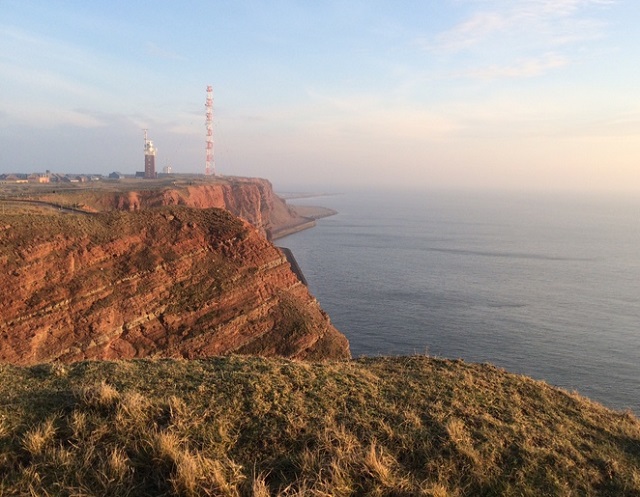
The island's many delightful attractions mean that the all-year ferry service is largely self-supporting. The subsidy provided by Helgoland amounts to just 150,000 euros per year, which is equal to 2 percent of the total operating costs - the other 98 percent coming from ticket sales.
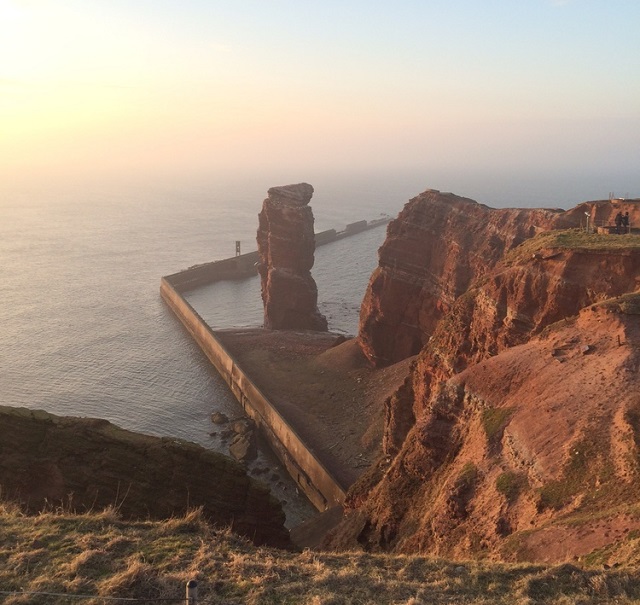
But back to the ferry, right?
Now named the MS Helgoland, making it the tenth vessel to bear this illustrious name, the new LNG ferry is 83 meters long, 12.8 meters wide and has a draught of 3.6 meters. The vessel is one of the largest ever worked on by Fassmer. Indeed, the ship is so long, her bow literally sticks out of the production hall - and it is truly awe-inspiring to stand under so much steel.
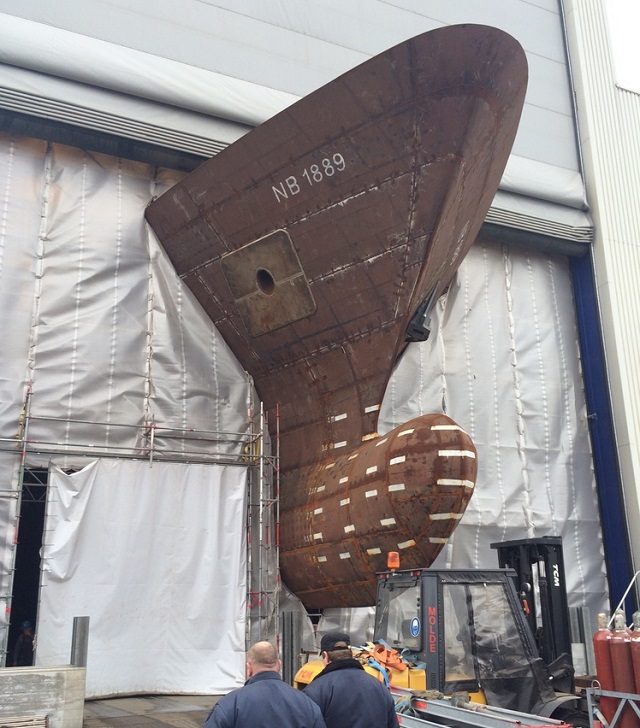
The MS Helgoland will carry approximately 1,200 passengers in the summer and 840 passengers in the winter, because the outdoor areas of the ship will not be usable. In addition, the MS Helgoland is a German mail ship and will carry post and packages to the island. We will get to another aspect of the ship, which is quite intriguing, later on - namely the fact that the MS Helgoland will also carry up to 10 half-size freight containers, three of which are reefers.
Moving into the production hall, we see that the ship has been sectioned. The marks on the supports indicate sections of the hull being worked on (in the picture below, we see Section VII).
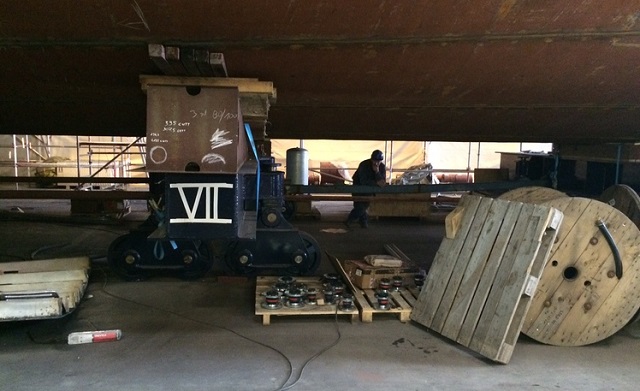
Fassmer is hard at work. The planned launch of the ship is June 2015.
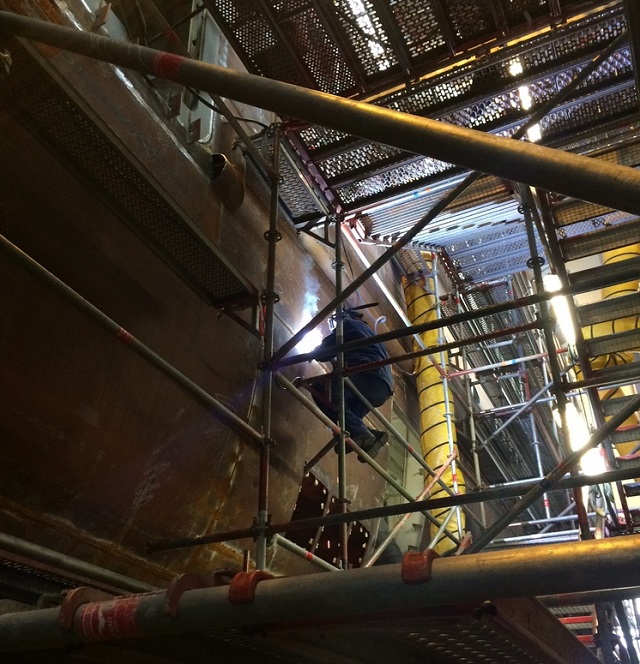
Some trivia: right now, the MS Helgoland is the biggest non-tanker newbuild in the European Union. A subsidy was provided by Brussels to the tune of 4,167 million euros to AG EMS, the holding company of Cassen Eils, for the use of LNG fuels. With the savings thus generated, AG EMS invested in two conventional crew transfer vessels for its offshore wind park services division, which range from 2-3 million euros a piece. Dr. Bernhard Brons noted that AG EMS would have been able to finance the newbuild with its own capital, but that the EU subsidy made it possible to accelerate investments in other areas which would have had to be postponed.
.jpg)
The aft of the MS Helgoland is based on a German military frigate. The naval architecture was implemented 1:1 on the basis of those schematics, since the dynamics of that design were especially conducive to a stable and smooth ride. Powering the MS Helgoland, we have two Wärtsila duel fuel motors with 1,665kW of power performance. Three supplemental diesel engines providing 700kW each can be used independently of or in conjunction with the main engines, allowing for a maximum of 20 knots even in harsh weather conditions or going against the stream of the Elbe River - whose current continues to grow with each further dredging.
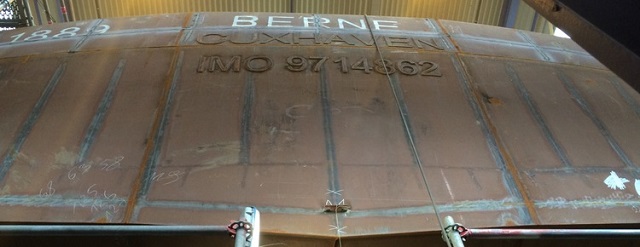
The home port of the MS Helgoland, like all Cassen Eils vessels, will be Cuxhaven.
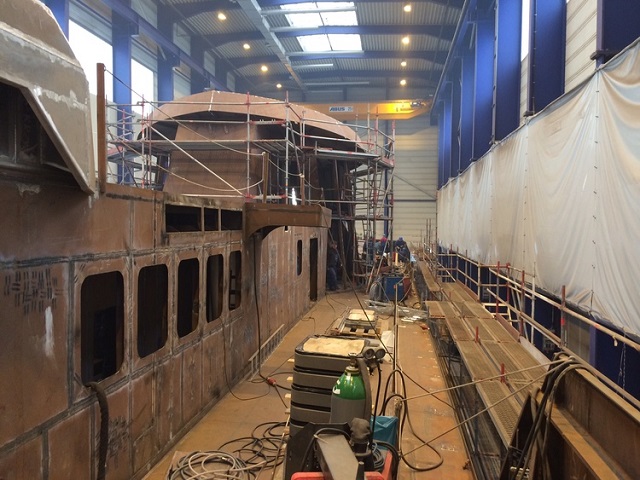
On deck, we got to see the promenades.
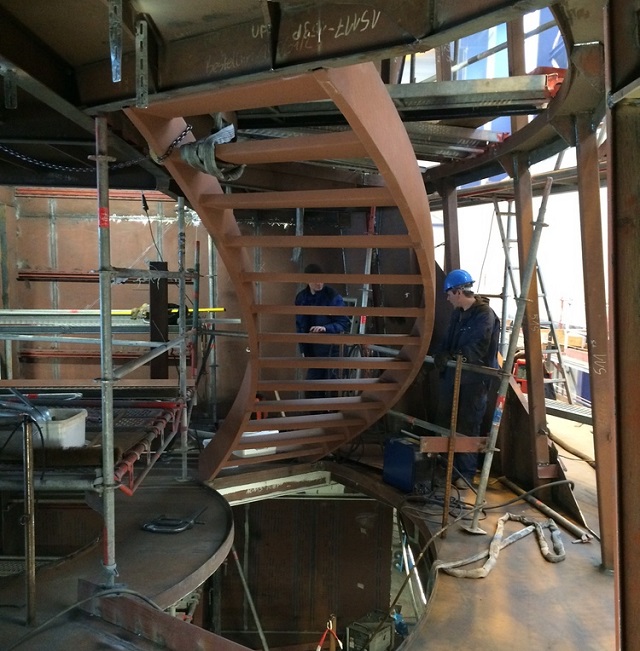
Spiral staircases add flair to the interior, along with a three-deck, sunny atrium.
It's difficult to envision cruise-like flair, given all the exposed supports, but it will come…
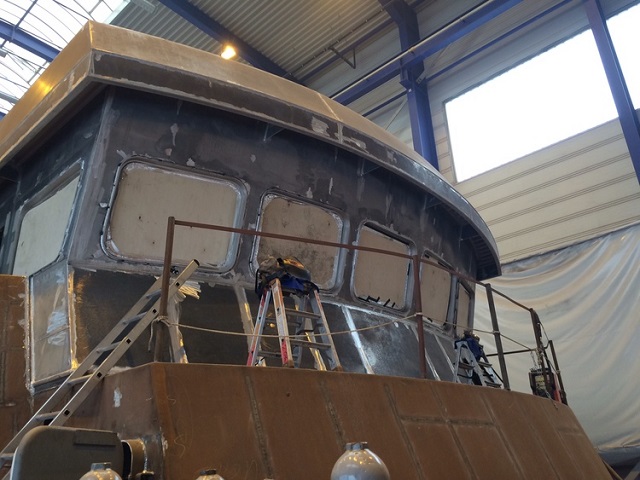
Captain on the bridge? The best view in the ship is unfortunately only accessible to crew.
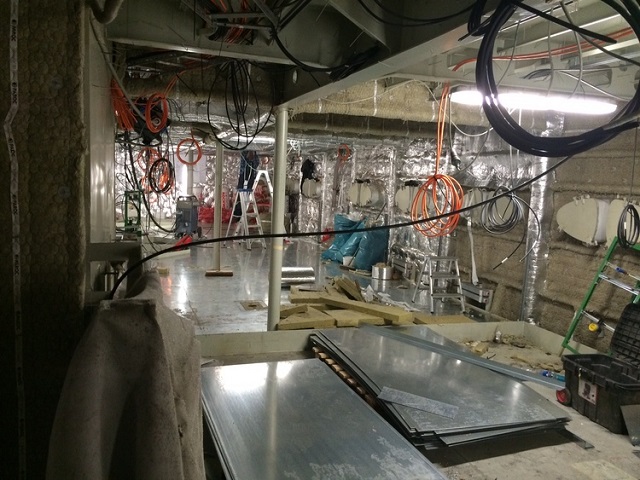
MS Helgoland will have multiple restaurants, some with wait service, a bar and a view room. In other words, she will offer something for every passenger, in every price category, and offer a range of casual to formal environments for every taste. These areas will be themed based on the cities, sights and locales visited by the ship along her route - from the "Süllberg" in Hamburg to the "Kugelbake" in Cuxhaven to the "Alte Liebe" in Helgoland.
Passengers can also expect smooth sailing to their destination, as German engineered and built Blohm + Voss stabilizers will be attached to the ship, along with three meter long fins. Each of these fins, which are retractable, weigh 11 tons and will help to eliminate rolling movements.
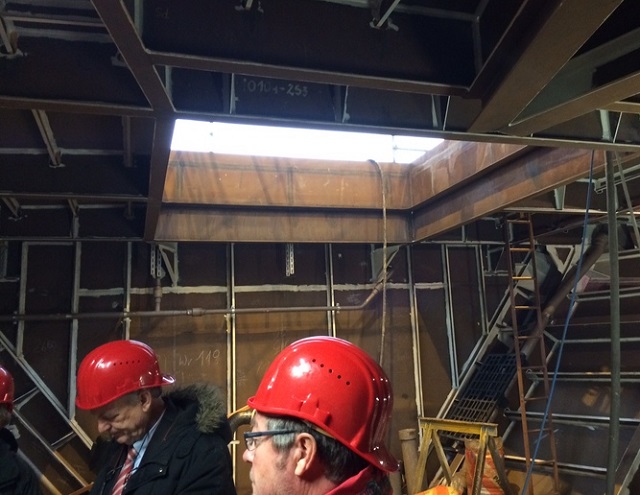
Above, we see the cargo hold. The bulk of the half-size containers will be kept under deck, where a system of rollers and winches will ensure quick loading and discharging. In total, the MS Helgoland has capacity for 80 tons of containers. Freight forwarding is to be handled through the DFDS branch office in Cuxhaven and the Helgoland Freight Office, near the harbor. The crew will have their hands full developing stowage plans and handling cargo operations!
As imposingly large as this ship is, it's incredible to recall that some are much, much larger.
The LNG engines will need to be worked out in practice, and it's sure to require some added training, especially in safety procedures, because the temperature of the fuel is -160 degrees Celcius. The difficulties posed are to be balanced out by cost savings in maintenance (parts to last 20 percent longer on average) and pollution reductions (20 percent less CO2, 90 percent less sulfur dioxide).
Also, to ease operations, the MS Helgoland can go up to three or four days between bunkering. Cassen Eils plans on building three or four bunker storage tanks, but the fuel is to be brought over from either Hamburg or Holland by LNG partner Bomin Linde. The ship itself has a tank capacity for 54 cubic meters of LNG fuel and 12 cubic meters of standard ship's diesel, which it is said will only be used for the ignition sequence.
When asked, Cassen Eils did not express any safety concerns with LNG bunkering while passengers may be on board. Cassen Eils got a single issue class certificate for the MS Helgoland rather than a type class certificate because the technology is so new (which, of course, meant a special inspection by DNV GL). Although Cassen Eils has no plans to build additional LNG ships, the company hopes that this ship inspires the German government to develop LNG-powered vessels in the German coast guard.
This is a very exciting new ship - we look forward to attending the launch!
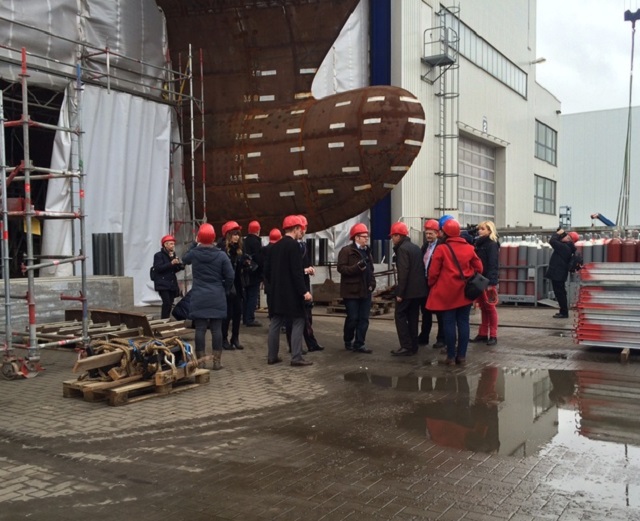
Erik Kravets and Audrey Kravets are co-founders of Kravets & Kravets, a German law firm specializing in maritime matters.
The opinions expressed herein are the author's and not necessarily those of The Maritime Executive.
